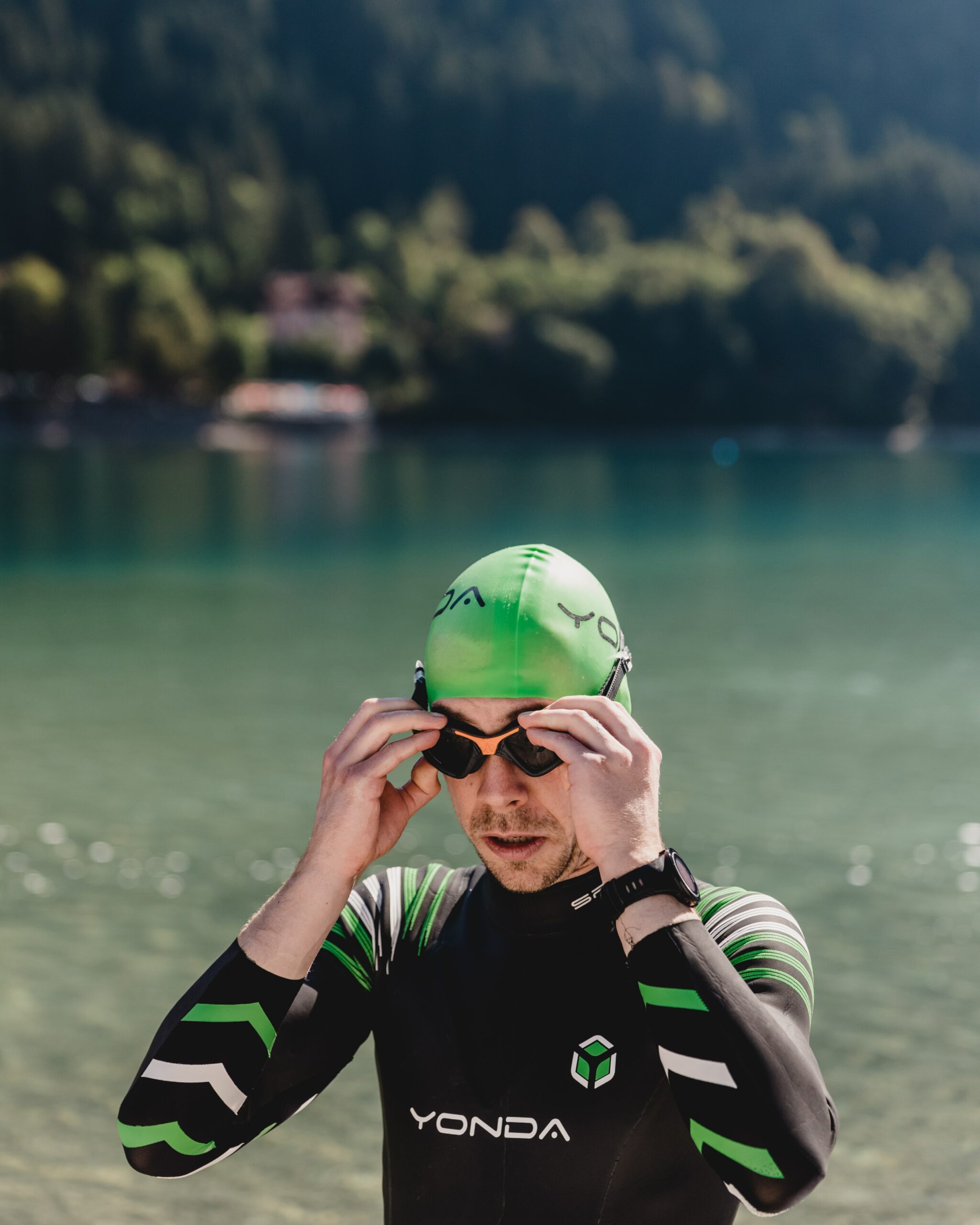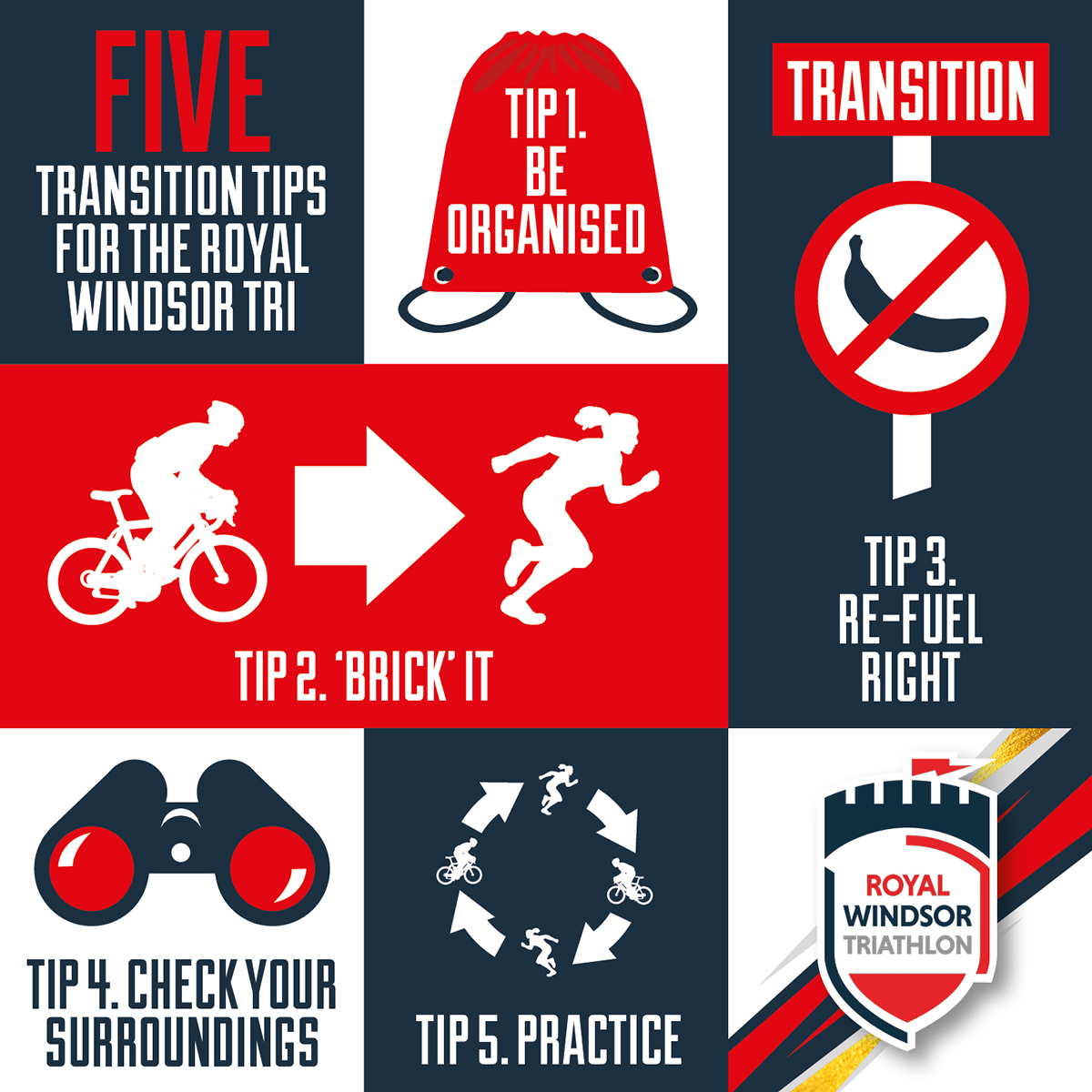5 Tips for Triathlon Transition
Triathlon is the ultimate multi-tasking sport. When else will you have to wiggle out of a wetsuit while locating your socks; doing one last helmet adjustment; and wheeling your bike to the mount line (don’t forget to stash some isotonic gels in your pockets!)
Thankfully, we’ve put together 5 top tips for smoother transitions during your Royal Windsor Triathlon. With the right preparation and knowledge, you can make an easy and safe transition to your next discipline, while shaving off precious minutes to your overall result time.
Note: In case this is your first triathlon and you’re not sure what a “transition” is, the term simply means the ‘in between’ times between each discipline – so this will be from swimming to cycling, or from cycling to running.
Your transition time is added to your official time for your event, so while transitioning should never be a rushed process (which may put you and other participants at risk) a smooth and ‘brisk’ approach to your next discipline is important.
Let’s get into the tips!
Tip 1: Be organized

Unless you have booked our on the day racking option, you will be required to rack your bike and helmet the day before the Royal Windsor Triathlon. We will be doing “hot racking” by wave which means that you will be racked on the next available number in your wave.
On the event day itself, many participants lay out a small towel underneath their wheel, with everything they need for the running and cycling legs placed on top (just ensure that no belongings stick out beyond the back wheel of your bike). Alternatively, a small bag can be placed under your bike.
Below are the items you might need for transition – remember to bring only essential items with you:
- Your cycling helmet (you will need to drop this off with your bike – wear it as you check into transition as our officials will need to check that it fits ok – you won’t be let in without this)
- A good pair of socks to cycle and run in
- Cycling cleats (if using) and running shoes
- Water (attach to bike) and food – bars, gels and fruit are some good choices
- Sunscreen, cap and sunglasses (weather dependent)
- Any first aid items such as an inhaler for asthmatics and blister plasters
Lay out your items neatly and remember to always be respectful of other participants’ space.
Tip 2: BRICK it
Getting ‘jelly legs’ when transitioning from cycling to running is a very real fear in the triathlon world. Your legs have been working hard on the bike and when you come off into the run, your legs can feel weak as you have depleted your glycogen (energy) stores.
A ‘BRICK’ session is key to building confidence and the strength to avoid jelly legs. A ‘BRICK’ is simply a training session where you start with a cycle and go straight into a run. To start with, don’t worry about the distance of intensity of either discipline in your training; the aim is just to get used to the sensation of transitioning and using different muscles.
For example, a very short, starter ‘BRICK’ session could be a 5km bike ride followed by a 2km run. Aim to build up the distance from here.
Tip 3: Re-fuel right
Avoid re-fuelling in transition area. Unless you haven’t practised, you should always take on fuel on the bike or while running. Chomping down an energy bar slows your transition time and also makes you more likely to forget something important for the next leg (like your helmet…)
Also, eating denser, ‘whole’ foods such as bars and bananas is better on the bike rather than running. This is because running is a ‘jostling’ sport, so the movement makes it harder to digest foods that don’t break down easily. Remember: always practice fuelling so that you know what and when to eat during the triathlon and never litter on the course (bring all wrappers back to transition).
Tip 4: Check out your surroundings
It is strongly recommended that you take a good look at the transition area and get your bearings on the Saturday before the event. See if you can find a landmark or noticeable feature near the area where you have racked your bike; this can help particularly if you’re discombobulated coming out of the water and struggling to find your bike during the event.
Have a look also at the entry and exit points for the bike and run, so that you don’t have to rely on looking around for marshals or following other participants during transition. It’s especially useful to know where the bike and run entries are, which you can take some time to do while racking your bike the day before.
On the Saturday before, why not also take the walk down to the swim start (about 15 minutes) and go into Windsor town centre where the run takes place? Take your time and take a thorough look around you to feel as prepared as possible.
Tip 5: Practice!
It is amazing how beneficial simple practice can be. Set up your equipment in a park, next to open water or a pool, or even in your back garden, and practice the order and efficiency in which you transition to your next discipline. After a while, this execution will become second nature, reducing your stress levels and the chance of you forgetting anything.
Bonus tip: For your first transition before the bike leg, start unzipping your wetsuit as soon as you emerge from the water. Then, once you’ve removed your goggles and cap, pull the wetsuit down to your waist. Once you’ve located your bike, you can then sit down to remove the rest of the wetsuit, making sure to dry off any excess water using your towel.
Have smooth and happy triathlon transitions!

